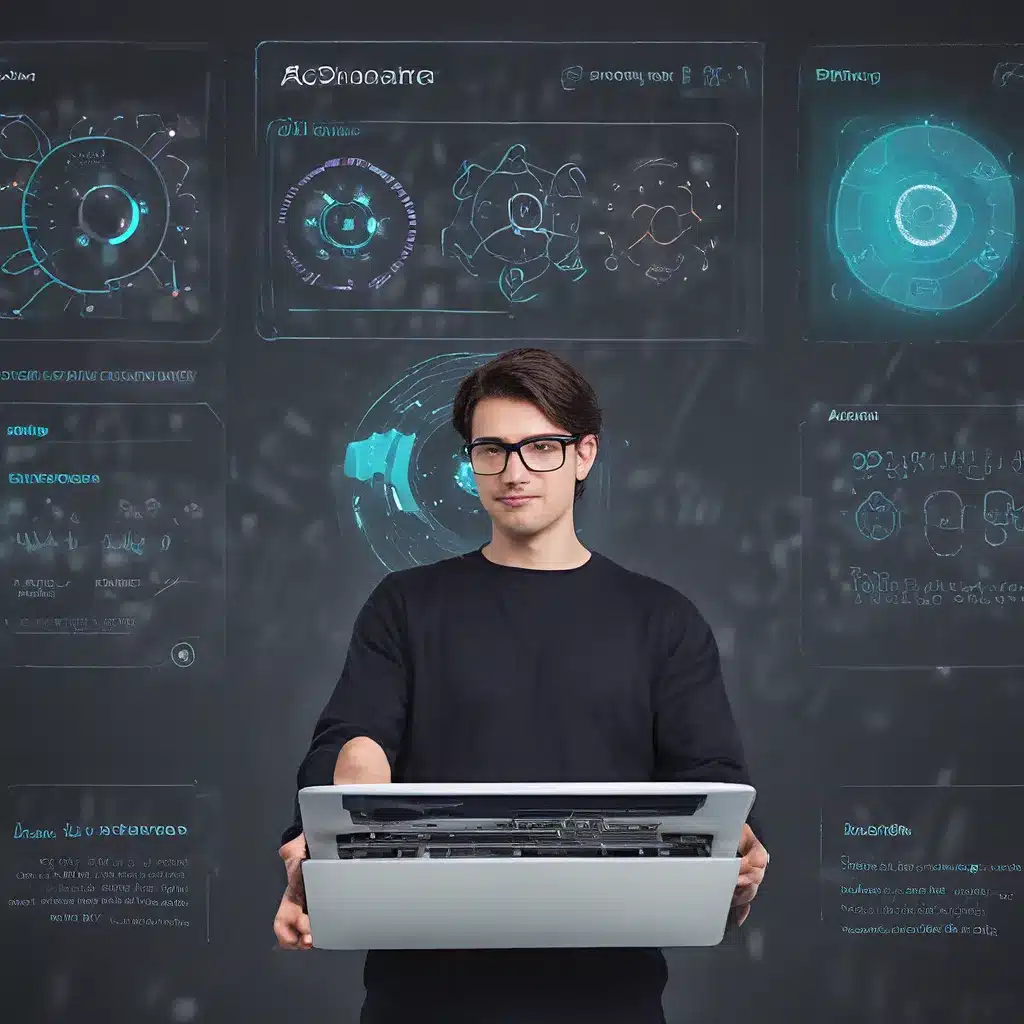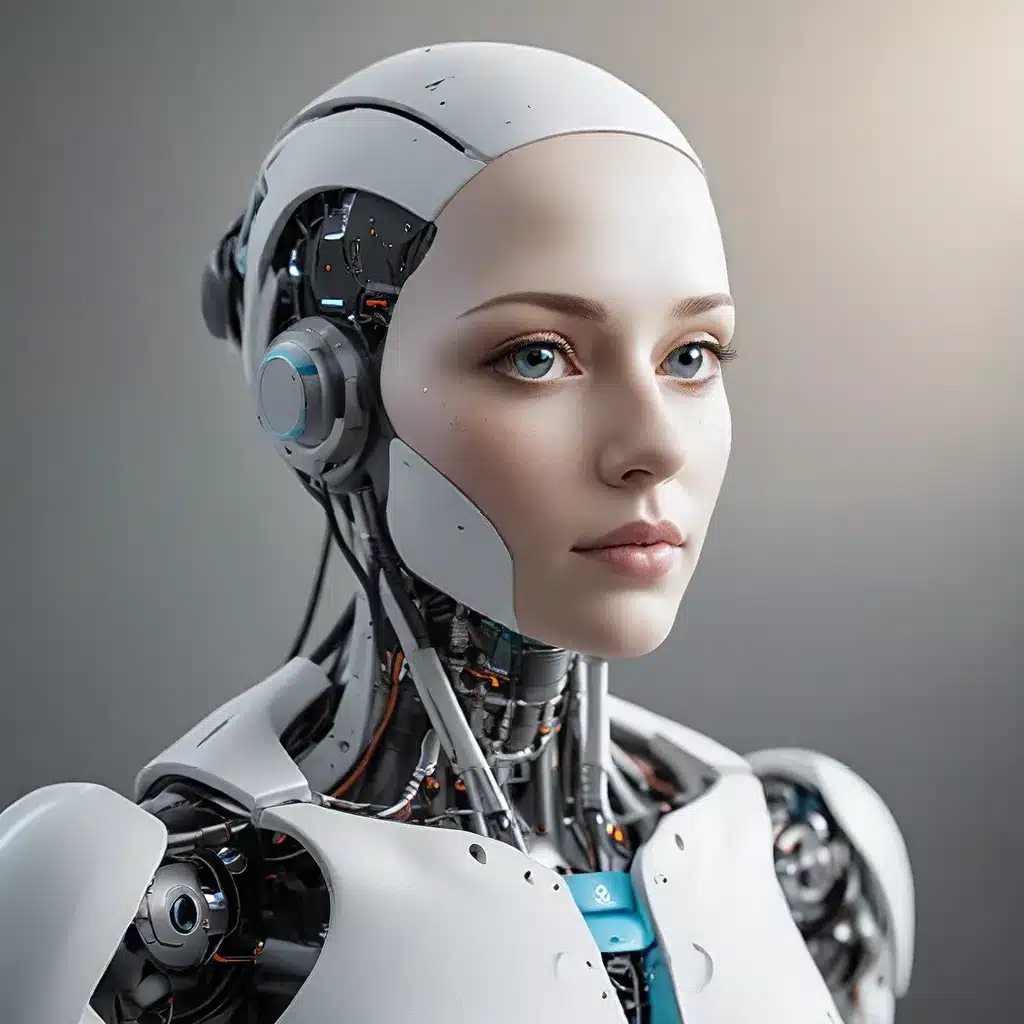
The Evolving Landscape of Web Design and User Experience
In the dynamic world of web development, the significance of user interface (UI) and user experience (UX) design continues to grow. As technology advances and user expectations evolve, the role of automation in enhancing the effectiveness of UI/UX design has become increasingly crucial. Prioritizing usability and accessibility in UI and UX design is essential, as it directly impacts the efficiency and safety of automated systems and user interactions.
Automation’s Transformative Impact on UI/UX Design
The rapid integration of complex technologies, such as robotics, artificial intelligence, and autonomous systems, has revolutionized the industrial automation landscape. However, the success of these advancements hinges on the seamless interplay between humans and machines. This is where the importance of UI/UX design comes into play, as it bridges the gap between the technological capabilities and the end-user’s needs.
Automated systems design involves the process of creating and implementing software and hardware components that can perform tasks with minimal human intervention. By identifying repetitive, time-consuming, or error-prone tasks, automation can streamline processes, reduce operational costs, and enhance productivity across various industries, including manufacturing, healthcare, logistics, and finance.
One of the key challenges in automation system design is ensuring that the user interface and overall user experience are intuitive, accessible, and adaptable. This is where the application of automation in UI/UX design can yield significant benefits.
Enhancing Usability and Accessibility
In the realm of industrial automation, where efficiency and safety are paramount, the role of UI/UX design becomes even more critical. An inadequately designed user interface can result in confusion, frustration, and even dangerous consequences. Automation in UI/UX design can help address these challenges by:
-
Understanding User Needs: Automated systems can gather and analyze user data, user behavior, and feedback to gain a deeper understanding of user requirements, preferences, and pain points. This insight can inform the design of more intuitive and user-centric interfaces.
-
Ensuring Consistency: Automated systems can enforce consistent design patterns, color schemes, typography, and navigation structures across the entire application or platform. This consistency helps users navigate the system more efficiently and reduces the cognitive load.
-
Providing Concise and Informative Content: Automation can help curate and present content in a clear, concise, and informative manner, allowing users to quickly understand and utilize the application or system.
-
Enabling Responsive Feedback and Interactions: Automated systems can provide real-time feedback and responsive interactions, building user trust and familiarity with the application. This can be particularly beneficial in high-stakes environments like industrial automation, where immediate response times are crucial.
-
Implementing Flexible and Adaptable Designs: Automated systems can adapt user interfaces to accommodate a wide range of user preferences, capabilities, and accessibility requirements, ensuring a more inclusive and user-friendly experience.
Automation-Driven UI/UX Design in Action
The impact of automation in UI/UX design can be seen in various real-world applications. For example, READY Robotics’ ForgeOS platform utilizes an exceptional user interface that reduces the challenges of automation integration. The intuitive UI and adaptable UX enabled Alicat Scientific, a leading manufacturer of flow control devices, to quickly learn and operate the system, resulting in substantial cost savings and improved product quality.
Similarly, inVia Robotics’ Logic warehouse execution system and Picker autonomous mobile robots have prioritized user-friendly interactions, minimizing the learning curve for employees and maximizing their efficiency in e-commerce fulfillment centers. By leveraging AI-powered performance monitoring and diagnosis, the system can identify and address issues automatically, further enhancing the overall user experience.
The Future of Automation in UI/UX Design
As the pace of technological innovation continues to accelerate, the integration of automation into UI/UX design will become increasingly essential. User experience design is not just about creating visually appealing interfaces, but about crafting meaningful and relevant experiences for users.
Automation will play a pivotal role in this process, enabling designers to gather and analyze vast amounts of user data, optimize design patterns, and continuously improve the user experience. Furthermore, the integration of artificial intelligence and machine learning algorithms will allow automated systems to adapt and personalize the UI/UX, catering to the unique needs and preferences of individual users.
As the world of web design and development continues to evolve, the design of effective, user-friendly websites and web applications will become increasingly reliant on the seamless integration of automation technologies. By harnessing the power of automation, UI/UX designers can create intuitive, accessible, and adaptable interfaces that enhance user satisfaction, productivity, and safety, ultimately driving innovation and success in the digital landscape.
Embracing the Future of Automation-Driven UI/UX Design
In conclusion, the integration of automation into UI/UX design is a critical component of the evolving landscape of web development and digital experiences. By understanding user needs, ensuring consistency, providing concise content, enabling responsive feedback, and implementing flexible designs, automation can elevate the effectiveness and accessibility of user interfaces.
As the pace of technological change accelerates, the role of automation in UI/UX design will only become more significant. By embracing these advancements, web design and development professionals can create innovative, user-centric solutions that drive efficiency, productivity, and innovation across a wide range of industries and applications.
Whether you’re a web designer, a user experience professional, or a business owner looking to optimize your online presence, staying informed about the latest trends and applications of automation in UI/UX design is essential for success in the digital era. By partnering with experts in web design and development, you can leverage the power of automation to create exceptional user experiences that resonate with your audience and drive tangible business results.





